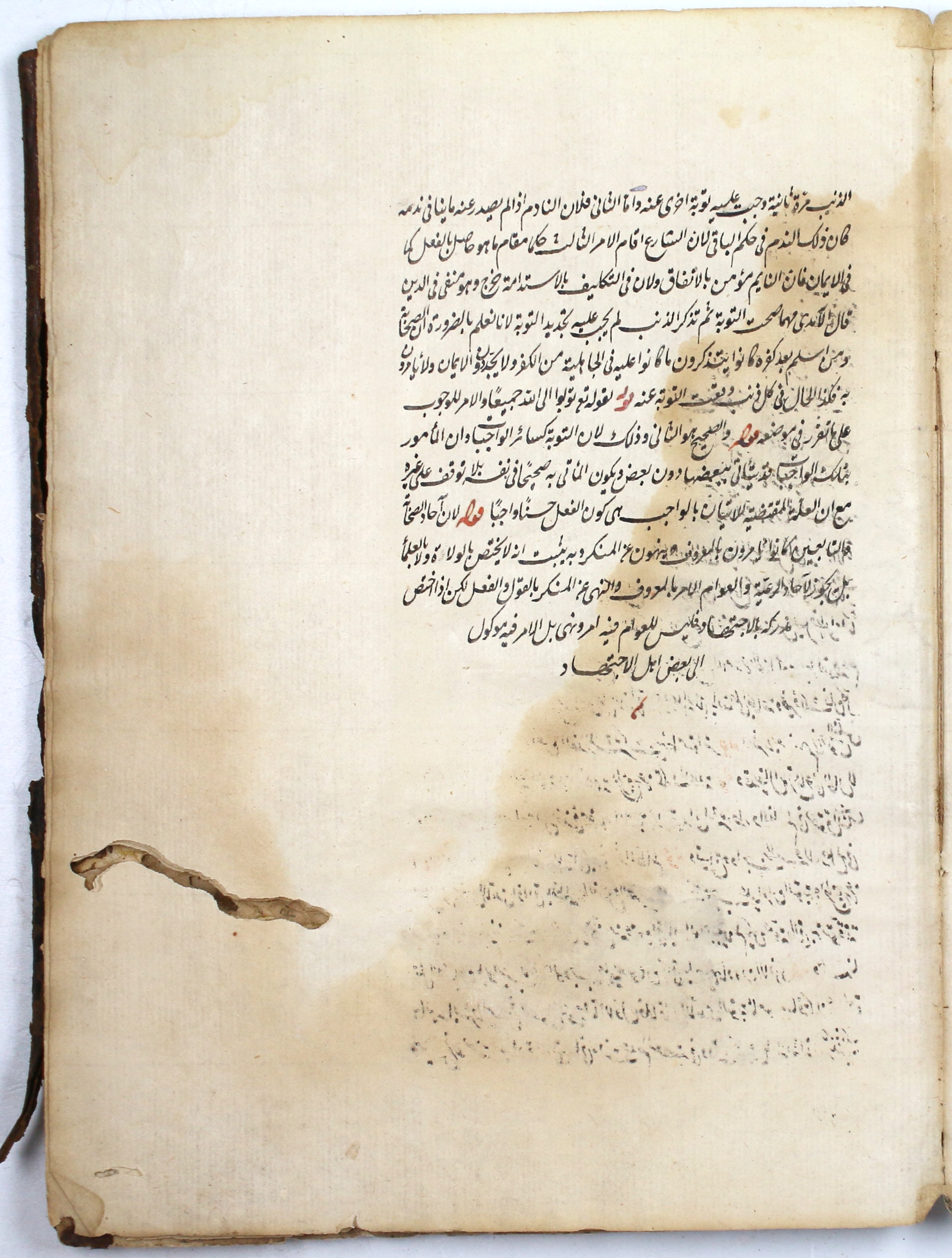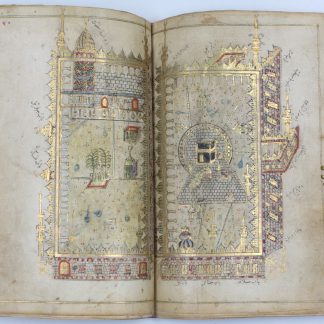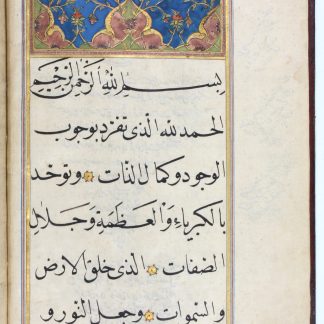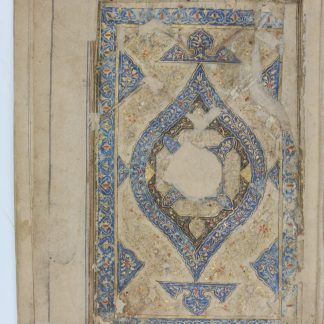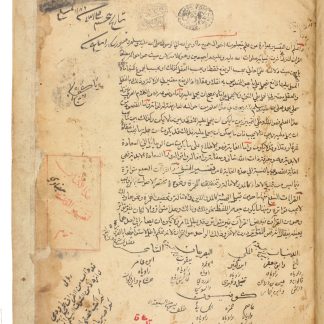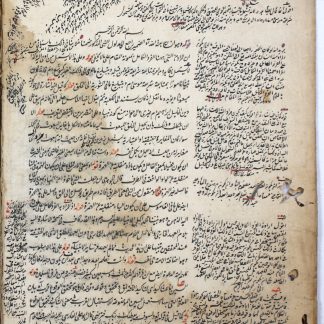From Paschal lamb to Persian dogmas
Hawashi Sharh al-'Aqa'id al-Adudiyya. [Notes on the commentary on the creed of al-Adudiyya].
4to (150 x 200 mm). 46 ff. Arabic manuscript on watermarked paper. Black nasta'liq script, with the word qawl ("say"), which opens each section, in red. 19th century limp boards with flap.
€ 7,500.00
An early Ottoman manuscript of this supracommentary on al-Dawani's commentary on the dogmatics of 'Adudaddin ibn Ahmad al-Iji (ca. 1281-1355 CE). Though its colophon is undated, the manuscript is written in tidy Ottoman nasta'liq Arabic script on watermarked paper; the watermarks, dated by Velkov to 1656, place this manuscript squarely in the second half of the 17th century, likely in Ottoman Turkey and almost certainly within the wider Ottoman Empire. The most distinctive watermark is a strange inclusion for a work on Muslim theology: a Paschal lamb (or Agnus Dei), haloed and seated on a cushion, holding a flag. The paper was made by Europeans, likely in Italy, and sold to the Ottoman markets. Too thin and polished to be useful for European printing presses, it was probably intended entirely for Muslim manuscripts.
The basis of this supracommentary is a work by al-Iji, a Persian philosopher from Ij near Shiraz. Al-Iji lived mostly in Soltaniyeh and for a while served as Qadi in Shabankareh, and later as Qadi al-qudat under Abu Sa'id Bahadur Khan. He returned to Ij and died as a prisoner in the fortress of Diraimiyan in AH 756, following a quarrel with the lord of Kirman (cf. GAL S II, 287).
Jalal al-Din al-Dawani's commentary on al-Iji is considered an important work in its own right, al-Dawani himself being one of the leading Persian scholars of the 1400s, and a man unafraid of critiquing the texts for which he wrote commentaries. He was also connected to the Ottoman court, through the patronage of sultan Bayezid II, to whom he dedicated several works.
With the Ottoman ownership seal of Muhammad Sakir, 1226 H (1811/12 CE).
Watermarks include: a three-leaf clover with the initials BG, and along the binding, an encircled Paschal lamb holding a flag and seated on a cushion. Together these two watermarks extactly match Velkov 13-13A, dated to 1656.
Covers worn, hinges splitting, some light worming throughout. Waterstain along spine; remains quite tidy and legible.
Cf. GAL S II, 287. Asparouh Velkov, Les filigranes dans les documents Ottomans (Stoyan Shivarov, 2005), p. 58: Agneau pascal 13-13A.





